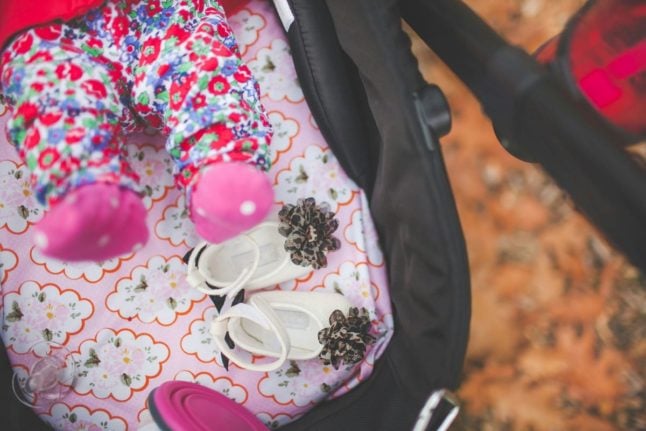Food choices
Plenty of schools and kindergartens across the country don’t serve warm food to students. Instead, packed lunches offered by both schools and kindergartens are the go-to choice.
This can come as somewhat of a shock to parents, especially in the winter when children are expected to play outside.
The kind of foods offered can also raise some annoyance from parents, as ultra-processed items such as “bacon cheese” in a tube will be served on a slice of bread.
Ultra-sugary and salty foods being on offer are also another common complaint.
Babies sleeping outside in the winter
In the Nordic countries, it is common for parents to leave their babies asleep outside in prams during the winter.
This comes as a shock for two reasons. Firstly, many nervous parents may not feel safe leaving their child alone outside where they are originally from—or they may be put off by the potential judgement of other parents.
Secondly is the fact that the winters in Norway are pretty cold.
In fact, when it’s too cold (-10c and below), parents are advised not to leave their children outdoors as babies have a harder time regulating their body temperature, so they are more at risk of hypothermia.
If it isn’t too cold, you can expect to see parents leave their children in a pram while they run into a store and grab something quickly.
Some sleep experts say there may be some health benefits, such as deeper sleep.
Plenty of outdoors time
Perhaps Norwegians’ general love for the outdoors can be attributed to them starting from an early age.
As we hinted at earlier, kids are expected to get plenty of time outdoors. In the winter, kids are sent out to play unless it is extremely cold. There will even be special field trips and outdoor days all year round.
There are even special kindergartens that place a special emphasis on being outside.
This focus on the outdoors means that some kids may be given the responsibility of using tools such as camping knives from an early age.
Another shock may come in the form of how much all this gear for hiking, skiing and camping will set families back.
This emphasis on being outdoors means many children are allowed to play outside and take themselves to and from school at an earlier age than in other countries.
Party etiquette
A core part of Norwegian society is built on inclusiveness, and this extends to birthday parties.
While in some countries you can expect to only invite your children’s friends to a party, in Norway, this could be considered rude.
Instead, you will probably be expected to invite your child’s entire class or, at the very least, all the children of your child’s own gender.
Schools may even have their own policy on the rules to ensure that as few children as possible are left out.
Long parental leave
Parents in Norway are typically entitled to a total of 12 months’ leave before and after the birth. These 12 months include the opportunity for the mother to take leave for up to 12 weeks during the pregnancy and six weeks for the mother after the birth.
This will shock some, where parental leave can be as low as 12 weeks of unpaid leave.
In addition to these 12 months, each of the parents is entitled to 1 year’s leave for each birth. This leave must be taken immediately after the first year of leave.
In Norway, you are also entitled to parental benefits while you are on leave. This means many parents have the opportunity to spend quality time with their children that they otherwise wouldn’t have been able to—at least without significant financial pressure.



 Please whitelist us to continue reading.
Please whitelist us to continue reading.
Member comments